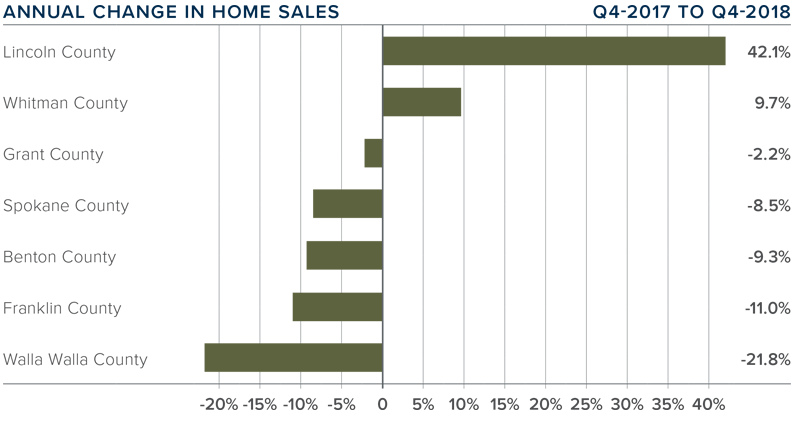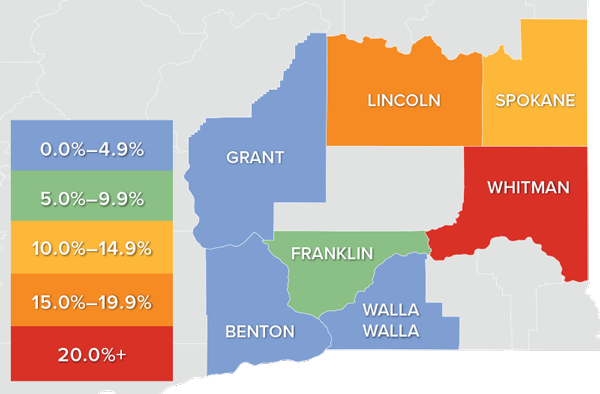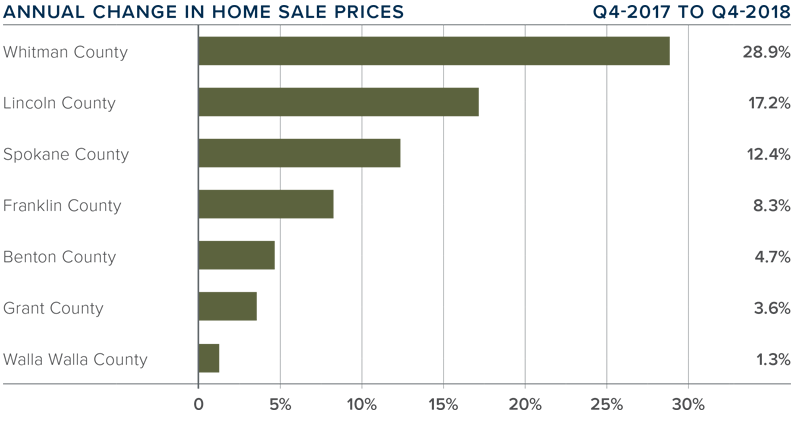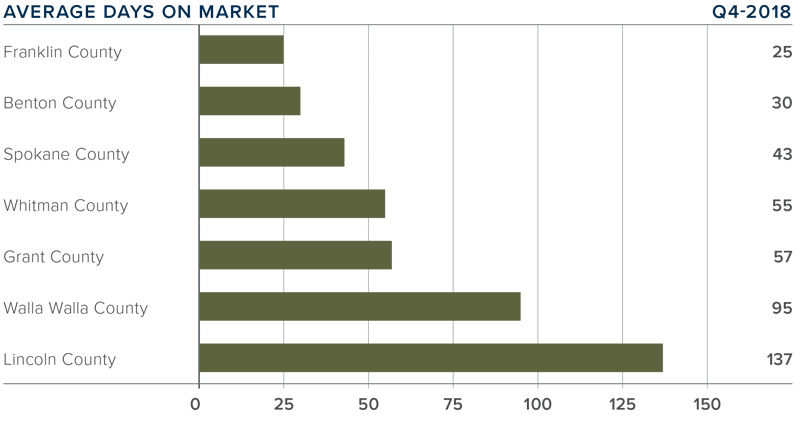The following analysis of the Eastern Washington real estate market is provided by Windermere Real Estate Chief Economist Matthew Gardner. We hope that this information may assist you with making better-informed real estate decisions. For further information about the housing market in your area, please don’t hesitate to contact your Windermere agent.
ECONOMIC OVERVIEW
The Washington State economy continues to add jobs at an above-average rate, though the pace of growth is starting to slow as the business cycle matures. Over the past 12 months, the state added 96,600 new jobs, representing an annual growth rate of 2.9%—well above the national rate of 1.7%. Private sector employment gains continue to be quite strong, increasing at an annual rate of 3.6%. Public sector employment was down 0.3%. The strongest growth sectors were Real Estate Brokerage and Leasing (+11.4%), Employment Services (+10.3%), and Residential Construction (+10.2%). During fourth quarter, the state’s unemployment rate was 4.3%, down from 4.7% a year ago.
Eastern Washington added 4,984 jobs over the past 12 months, representing an annual growth rate of 1.1%. Although the region added jobs at a fairly healthy clip, the unemployment rate matched that seen a year ago at 5%.
HOME SALES ACTIVITY
-
Home sales throughout Eastern Washington slowed in the final quarter of the year, with total sales down 8.7% over the same quarter in 2017 to 3,211 units.
-
Sales rose fastest in the small Lincoln County area, which increased by a significant 42.1%. For perspective, that translates to only eight additional sales. Walla Walla County was again a laggard, with a drop of 21.8%. But it, too, is a small market that can be prone to significant swings.
-
Year-over-year, home sales rose in just two counties, with the balance of the market seeing some fairly significant drops.
-
Interestingly, the number of homes for sale dropped by 15.2% from the fourth quarter of 2017. Many Pacific Northwest markets saw significant increases in inventory levels last fall, but that was not the case in Eastern Washington. That said, I anticipate we will see more homes for sale as we move into the spring selling season.

HOME PRICES

-
Year-over-year, the average home price in Eastern Washington rose 9.5% to $264,231. However, price growth slowed somewhat between third and fourth quarter, reporting a 2.6% drop in the average sales price.
-
Low inventory in the region continues to be a significant hurdle to many home buyers. I had hoped more homes would come onto the market in the fall, but that was not the case. The spring market should provide more choice for buyers.
-
All the counties in this report saw prices rise compared to the fourth quarter of 2017. Whitman County took over the number one spot, with an annual price increase of 28.9%.
-
The takeaway here is that home-price growth has cooled a little but remains well above the long-term average.

DAYS ON MARKET
-
The average time it took to sell a home in Eastern Washington in the fourth quarter of 2018 was 63 days.
-
The average amount of time it took to sell a home in Eastern Washington dropped nine days compared to the fourth quarter of 2017.
-
Every county other that Lincoln (+2days) saw the time it took to sell a home drop compared to the same quarter in 2017.
-
Notably, it took 17 more days to sell a home in the fourth quarter than it did in the third quarter of last year, but I attribute that to seasonality.

CONCLUSIONS

The speedometer reflects the state of the region’s real estate market using housing inventory, price gains, home sales, interest rates, and larger economic factors.
The number of homes for sale dropped off in recent months and housing markets throughout Eastern Washington remain very tight. The overall trend continues to favor home sellers, so I am moving the needle slightly more in their favor.

As Chief Economist for Windermere Real Estate, Matthew Gardner is responsible for analyzing and interpreting economic data and its impact on the real estate market on both a local and national level. Matthew has over 30 years of professional experience both in the U.S. and U.K.
In addition to his day-to-day responsibilities, Matthew sits on the Washington State Governor's Council of Economic Advisors; chairs the Board of Trustees at the Washington Center for Real Estate Research at the University of Washington; and is an Advisory Board Member at the Runstad Center for Real Estate Studies at the University of Washington where he also lectures in real estate economics.
 Facebook
Facebook
 X
X
 Pinterest
Pinterest
 Copy Link
Copy Link



